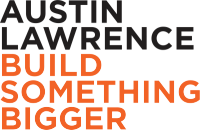Marketing is a fashion business. We glom on to trends and ride them until they lose effectiveness, and then ride them some more while we try to figure out what’s next.
Today’s buyer isn’t having it though.
In my 34 years of guiding software and technology CEOs and CMOs, the changes in the last couple of years have been the most profound—rendering tactics that worked well a few years ago virtually useless.
If you haven’t read the most recent TrustRadius Report on the buyer seller disconnect, it’s a great place to start. Founder and CEO Vinay Bhagat’s interview on our SaaS Backwards Podcast certainly opened our eyes.
The gist of it is this: buyers have changed the way they buy, and sellers have been slow to catch up. Outbound motions that once yielded predictable revenue are accelerating to zero effectiveness.
Vendors are rarely in the top five sources of information and resources used to start and support the bulk of buyer decision making.
It’s like fishermen who’ve over-fished, we need to find a new way to revenue.
This is good news for some of us. It’s a major opportunity for SaaS leaders to differentiate themselves and their companies—regardless of the tactics and campaigns— by providing content that’s actually helpful to the buyer and less about “getting them into your sales pipeline so you can convince them.”
But you can’t keep making these common mistakes…
#1: Website Isn't Optimized for Demand Generation
You’re in the demand generation business now, so forget lead generation.
Your website is the main billboard for your company—and if you’re not catching site visitor attention on the homepage hero, and giving them a reason to explore further, they’ll drive right on by.
According to a study by HubSpot, 55% of visitors spend less than 15 seconds on a website, so it's crucial to make a strong impression quickly since the majority of most B2B site visits start at home.
Make sure your website is performing well with tools like Hubspot’s Web Grader and Google’s Pagespeed Insights.
Good performance will increase your prominence in search, and for the moment, search still matters. Consider creating a deep glossary of your industry’s terms as bait for generative AI tools, as they crave deep content they can reference in results.
You must provide extremely helpful content that allows the buyer to put herself inside your use case—without filling out a form until they are ready to talk to sales.
As scary as this is, all the data supports that lead gen tactics are completely out of fashion.
#2: More Focused on Acquiring New Customers than Retaining and Growing Current Customers
New logos get all the love from CEOs and sales leaders, and this has to change. Customer success is where it’s at (from a long term value point of view).
While acquiring new customers is important, it's equally crucial to focus on expanding business with and through current customers.
According to a study by Bain & Company, increasing customer retention rates by just 5% can increase profits by 25-95%. There’s a boatload of other data out there at your fingertips that makes the point: SaaS LTV is just beginning when you close the first deal.
Driving revenue from customers requires a different selling strategy —instead of moving them off their status quo, you are the status quo and must defend it and build it out further at client organizations.
For a window into the best strategies, start with our podcast interview with Tim Riesterer, author of The Expansion Sale.
#3: Not Optimizing Review Sites Review sites such as G2, Capterra and TrustRadius
Review sites play a significant role in the purchasing decisions of potential customers.
SaaS companies should actively manage their presence on review sites, encourage satisfied customers to leave reviews, and address negative reviews promptly to maintain a positive brand image.
Review sites are performing an important role in how buyers get information now.
Almost all of us are conditioned to check reviews before making a purchase, and SaaS is falling in line. While many decision makers will take them with a grain of salt, reviews figure into nearly every buying decision.
In the customer interviews that we perform on behalf of our clients, they almost alway mention reviews as having a role in solution discovery or confirming the solution set for a significant decision.
Clients at SaaS firms likewise report a rise in inbound leads from review sites.
Get on this bandwagon if you’re not already.
#4: Website Doesn't Answer Prospects' Questions
Any complex sale involves a range of decision making criteria and motivations, from the objective to comparative to emotional and reactive. Perhaps one of the more important ones is the objective set.
In a situation where you’re invited to bid on an RFP, you should have access to the majority of the objective criteria and questions that need to be answered. But, wouldn’t you like to ensure you’ve jumped the largest hurdles before an RFP is issued?
A deep understanding of your potential customers’ business, along with their needs, wants, fears and ambitions, makes it possible to align your messaging and buyer support resources with prospects on a multi-dimensional level.
With this fundamental knowledge, you can make your website answer the questions they are asking themselves - and your competitors - before they ask you.
By anticipating their needs you’ll be able to make your company stand out in a sea of sameness that’s going to get worse, not better, as mediocre marketers use generative AI tools like ChatGPT to create more and more of their content.
Keen readers and listeners to our podcast will know that we also believe you need to lead your prospects to new ideas, not just meet them where they are. For you, section 6 below on motivating prospects to act offers some support.
#5: KPIs Prioritize Meetings/Demos Over Meaningful Engagement
While meetings and demos are important, focusing solely on these activities may not necessarily result in meaningful engagement with prospects.
According to Brent Adamson, principal executive at CEB and co-author of The Challenger Sale, the average number of stakeholders involved in a B2B purchasing decision was 6.8 in 2016.
The chances of closing a deal decrease as the number of stakeholders increase.
Instead of just aiming for more meetings, SaaS companies should focus on building relationships, understanding customer needs, and providing value-added interactions to drive meaningful engagement.
The quality of meetings and calls is much more important than quantity, especially as ARR increases.
#6: Content and Messaging Don't Motivate Prospects to Act
If we accept that for solutions that are not completely new, then only a small percentage of your total addressable market (TAM), (Chet Holmes, author of the Ultimate Sales Machine says 3%), are in-market at any given time.
It’s clear that we need to move up the funnel to drive more opportunity down. But where and how does that happen?
We’re big believers in the insights offered in the book, “The Challenger Customer” by Brent Adamson, Matthew Dixon, Pat Spenner, and Nick Toman. Building on the insights you’ve gained into their business, their jobs and their lives in general, you can then start to build research, content and engagement strategies based on new insights and ideas.
And these are the ideas that can help your company, brand and executives become magnetic in the market.
Some examples of commercial teaching:
Inbound Marketing and HubSpot: They created a category and then dominated it. Realizing that prospects were searching for solutions but not many searches resulted in sales activity, HubSpot promulgated the emerging ideas around lead generation and built marketing technology to monetize search traffic at B2B websites.
Response time to inbound calls and InsideSales.com: Pioneering research into the outcomes of millions of calls in response to inbound leads enabled InsideSales.com to dominate the market for smart dialing solutions used by larger SaaS and B2B organizations. Some of their conclusions have had to be retired (e.g., call a lead back in five minutes for the best result), but for quite some time they’ve built a business on the back of their research.
Contemporary SaaS marketing has to focus on the (give or take) 37 percent who are problem aware and gathering information about potential solutions. We also can influence those who are not problem aware if we have great insights that will motivate them to begin a journey of investigation into their businesses.
And yes, we need to do a great job with the three percent that are actively searching for a solution.
This will mean doing everything well - creating awareness, answering questions they have, providing social proof, enabling buyers with resources they want (see TrustRadius 2023 Buyer Disconnect Report) and amazing sales calls and demos when they do raise their hands.
The “three percenters” who are actively searching will be influenced by your thought leadership as well - among a cohort of solutions that appear similar, they’ll gravitate to the vendor and executive team that appeals to them most.
#7: Haven't Fully Leveraged Pricing and Packaging
Pricing and packaging strategies can greatly impact the revenue and profitability of a SaaS business. However, many companies fail to fully leverage this opportunity, leaving money on the table.
We used to recommend that SaaS leaders engage a pricing consultant to ensure a positive outcome on new pricing strategies.
A recent blog by OpenView Venture Partners offers a fairly comprehensive DIY playbook for pricing research and strategy, and it may be enough to guide you to a good result.
SaaS companies should continuously review and test their pricing and packaging strategies, taking into account factors such as customer segmentation, competitive analysis, and value-based pricing to maximize their revenue potential.
I cannot recommend this more highly - pricing is your #1 lever to pull and the research into what is working and not is fairly widely distributed by OpenView, Paddle (via PriceIntelligently) and others.
#8: Not Benchmarking Performance and Investments
Benchmarking is essential for SaaS companies to assess their performance and investments in comparison to industry standards and competitors. However, many companies overlook this crucial step.
For those who report to CEOs and CFOs that don’t benchmark, these resources can help to justify changes in go-to-market staffing, funding and much more (these can be true lifesavers if you’re being measured on ambitious goals but not funded adequately to achieve them).
According to a study by OpenView Partners, only 33% of SaaS companies benchmark their performance against other companies.
Benchmarking can provide valuable insights into areas where your company may be underperforming or underinvesting, and help identify opportunities for improvement in areas such as customer acquisition, retention, and financial metrics.
In addition to OpenView’s annual metrics reporting, SaaS Capital and KeyBanc Capital Markets publish highly valuable annual studies on SaaS companies - all available at no cost and of extremely high quality.
#9: Not Appropriately Investing in Integrations
Integrations play a crucial role in the usability and effectiveness of SaaS products. However, some companies do not invest enough in integrating their software with other solutions, which can hinder customer experience and limit the value of their product.
According to a study by WIPRO, 61% of SaaS buyers prefer products that are integrated with their existing technology stack. SaaS companies should prioritize investing in integrations with popular tools and platforms used by their target customers to enhance the usability and value of their product.
In our podcast interview with Fraser Davidson, CEO of iPaaS Cyclr, he talks about three kinds of integrations: Strategic, which a SaaS would likely custom code to get the most out of; Commercially Important, which are likely needed in larger numbers and would benefit from using an iPaaS that has a large number of pre-configured endpoints (and therefore needing less effort per application to get into production, but correspondingly would be less robust); and, Emerging, which can be handled through an IFTTT integration like offered through Zapier until they become more important. Here’s a link to the episode if you want to hear more.
#10: Not Closely Monitoring Churn and Testing Strategies to Reduce It
Churn, or customer attrition, is a common challenge for SaaS companies. However, some companies do not accurately monitor churn rate and fail to implement effective strategies to reduce it.
According to a study by Totango, the average SaaS churn rate for MRR businesses is as high as 5-7% per month.
SaaS companies should actively track and analyze their churn rate, identify the reasons behind customer churn, and implement targeted strategies such as improving customer onboarding, enhancing product features, and providing exceptional customer support to reduce churn and increase customer retention.
It’s important to dig into the reasons for churn because it’s often a symptom of something else going on in the business. Examples of these internal and external causes include new competitors with more attractive products, change in competitor products or pricing, service outages or buggy behavior, poor customer service, and more.
The point is that you can’t take churn at face value, you need to dig deeper.
Conclusions
Software is a highly competitive industry and the SaaS business model is more complex than what preceded it (premise-based licensure). Many entrepreneurs are not SaaS experts when they form their businesses and as these businesses grow they become more complex than founders might imagine.
Bringing in (or partnering with) SaaS business model experts can dramatically improve the financial performance of SaaS businesses at almost every stage of development.
If you have questions about your firm’s business model performance, please book a complimentary consultation to dig deeper.





